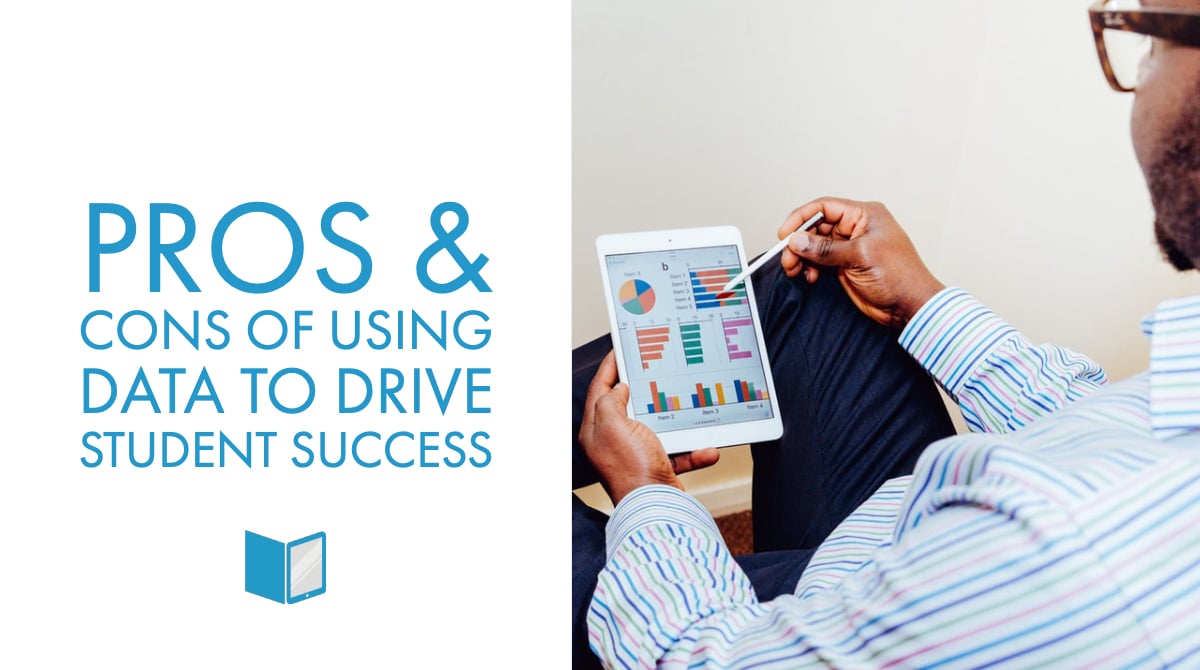Predicting whether a student will pass or fail a course can be a challenge. In small classes, teachers are more accurately able to evaluate students based on in-class participation and comprehension. In a large lecture hall, however, keeping track of at-risk students gets a bit tougher. Test scores are often predictive, but poor scores can come too late to set a struggling student back on track if testing is not done early and often. The introduction of predictive student analytics has offered us a practical and more robust solution to this problem. Rather than depending on students to ask for help, we can now rely on their data to predict if and when they need it to be able to take the necessary proactive steps.
Student analytics compile a number of inputs - such as scores on entry exams, engagement metrics from online class discussions and homework completion rates - to predict the need for academic intervention. The technology, however, is not without flaws. To get a better idea of how student analytics work in practice, let’s review the pros and cons.
Pros of Data Driven Instruction
- Helps to identify academic bottle necks ie. required courses with low pass-rates that can hold up student progress. These courses can then be evaluated more closely to identify if the problem lies with the provided materials, the instruction methods and/or potential student challenges;
- Assists with spotting struggling students more easily mid-course, giving teachers a proactive chance to provide supplemental resources to improve their chances of success;
- Surfaces trends in overall class performance to allow for responsive course material improvements at scale for institutions of higher learning where class sizes and blending learning styles can vary greatly.
In a nutshell, data can do more than predict a student falling behind. It can provide context as to WHY it is likely to happen, at both individual and collective levels. This context gives teachers the ability to develop data-driven action plans. For example, if data reveals a student with minimal participation in group discussions, the teacher can work with them to build confidence in the topics of discussion and offer incentives for participation. Teachers can feel more confident in their approach knowing it's backed by data, which in turn helps them to empower students - it's a positive domino effect.
In fact, many universities have already seen substantial improvements in student outcomes since implementing data driven success programs. Georgia State even attributed a 30% increase in graduation rates primarily to the use of student analytics to fuel student success.
Data isn't only useful on the admin side. It's also important to note how students can leverage their own data. They can track their personal academic goals, self-identify areas of academic weakness, and proactively take steps themselves to course correct. For example, if they consistently turn in assignments late and miss class because they’re too busy, it may be an indication to take on fewer courses to leave more time to focus on each of the remaining ones.
Cons of Data Driven Instruction
- Requires an investment in training. Without sufficient training, teachers may find the program to be frustrating and ineffective. Effective analytics tool training needs to be available to all educators, but not all schools have accepted this as a priority;
- Requires an investment in time spent using it. Teachers may struggle with finding the time to fit this technology into their current workflow, missing out on the chance to analyze and then utilize the data generated for their and their students' benefit;
- Technology is neither infallible nor a silver bullet. Problems with student analytics platforms can slow down the good things they are meant to enable and understandably cause an unwillingness to use among teachers. Some platforms may also have trouble perfectly integrating with every course style. For example, courses designed by multiple publishers or ones that utilize a variety of different content types from many different sources may be harder to analyze until these systems solve for that.
Is Data Driven Education Worth It?
The potential of using student data to drive student success is there, but can it be actualized? Most likely, the answer is yes. If course builders take the time to embrace data driven instruction, the pros outweigh the cons. Phrased differently, don't let internal complications such as technology adoption stand in the way of enabling a better and more dynamic learning experience for students.
Gutenberg Technology's course building and assessment tools are LMS agnostic and can push content wherever you please. If you've ever used Facebook or any of Google's applications, you'll feel at home in our easy-to-use editors. We're happy to show you how.



Leave a comment